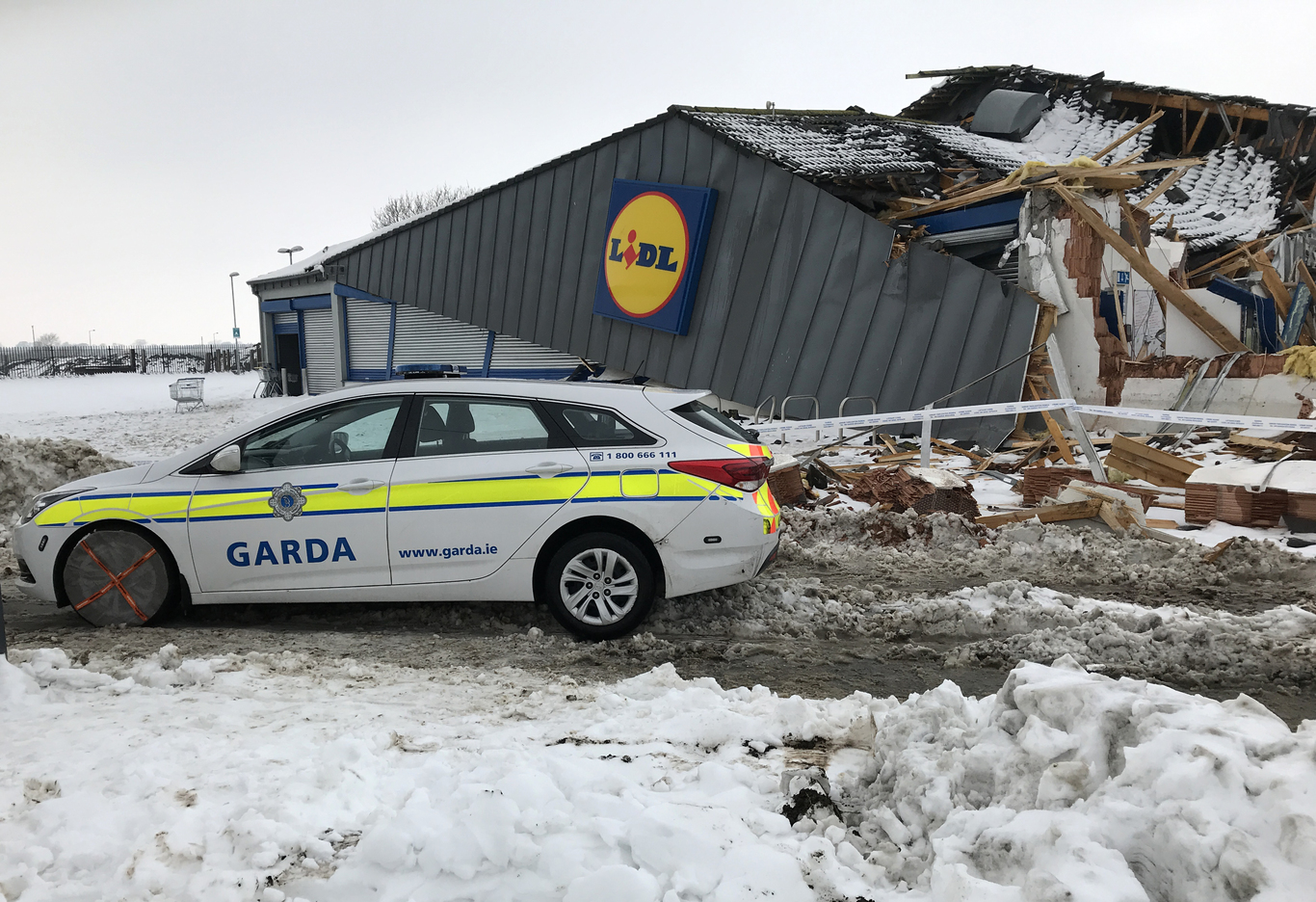How Lidl spun its Tallaght store's destruction into social media gold
The supermarket chain faced a PR onslaught as looters hit the outlet during Storm Emma.
IT WAS ONE of the busiest evenings the social media team has experienced to date, putting into practice everything we’ve learnt in our annual crisis simulations.
In 24 hours we had 40,000-plus brand mentions, and we had a 3,000% increase in visits to our Twitter profile.
Of course I’m referring to the impromptu destruction of the Lidl Fortunestown Lane store last month during Storm Emma when a digger was stolen from a nearby construction site and used to break into the Tallaght premises.
As is the case with most corporate crises now, events unfolded live across social media.
We put our crisis communications training to use and were able to limit the negative PR outcome.
By no means did we handle the crisis perfectly, but we were able to avoid an online disaster by reverting to the essential behaviours that customers expect to see on social media.
This in turn resulted in an incredible level of goodwill towards our Fortunestown store team, an outpouring of support for the Lidl brand and an influx of new followers.
Sprout Social conducted research last year where users revealed that the most sought-after behaviours from brands on social media are honesty, friendliness, helpfulness and humour.
You then have to throw into that mix the urgency of a PR crisis, when you have to react quickly. No pressure then.
Reacting quickly
To get the information out there as quickly as possible, businesses need to have systems in place to ensure that all areas understand social media.
That’s not to say that all departments need to know how to create dynamic product ads with a frequency cap of three, but they need to understand how their role feeds into social media and the impact it has.
A few examples from our teams:
- The customer service department recognising how an enquiry received through social media is different to a traditional customer enquiry and the urgency required to ensure it doesn’t publicly explode.
- Supply chain understanding that during a crisis like Storm Emma consumers turn to social media for updates in real-time. In this example, our customers needed to know when deliveries of fresh fruit and vegetables would finally get sent to stores.
- During the storm, operations kept social media updated the entire time to ensure that customers knew which stores were open and which had to be shut.
It’s this education that lays the groundwork that allows the social media team to respond quickly and accurately when a crisis occurs. Speed at times like this allow businesses to keep things from spiraling and helps maintain customer relationships.
And it’s something that can be implemented at any time.
Honesty is the best policy
Customers expect brands to be honest and transparent on social media, and they need to be able to trust the information they’re given. Many businesses will play things down to attempt to protect themselves.
Telling the truth rather than trying to cover things up creates an emotional connection with your customers and builds that trust that is so important. This authenticity is the reason why a tweet like this resonated so much with the audience:
Read the room
That and the following tweets received more organic impressions than our entire Christmas Twitter campaign combined, they were featured in numerous online publications and we even got a shout-out on TV3’s Elaine show.
But when should you adopt this informal, chatty tone of voice? It’s all about reading the room, mirroring customer tone and making sure you stay true to your brand’s core values.
You don’t want a funeral director posting memes in the same way you don’t want a kids’ trainer brand speaking in a sombre tone.
On the night of Storm Emma, you can see from our social accounts that our tone adapted as events unfolded.
We went from helpful and friendly (updating on store closures and advising on stock availability), to serious (releasing a press statement on the incident) to finally humorous.
We could have pretended that the whole thing never happened and people weren’t making jokes at our expense, but instead we steered into the skid. We took the mick out of ourselves before other people got the chance.
It sounds obvious, but showing personality across social media makes your communication more personal, and you achieve that connection with your customers that you’re looking for.
You can use humour on social media to ‘own’ a negative story and have people talking about what you want them to be talking about.
Crisis lessons for businesses
- Get the information out quickly by educating all staff (not just those in the communications/marketing teams) in social media. Help them understand how it’s impacted by their roles.
- Authenticity on your channels results in emotional connections with your customers, so be honest with them and they’ll reward you with trust.
- Read the room and make sure your tone of voice fits the situation, the brand and mirrors the customer’s tone.
Tom Mughal is social media manager at Lidl Ireland and Northern Ireland.










